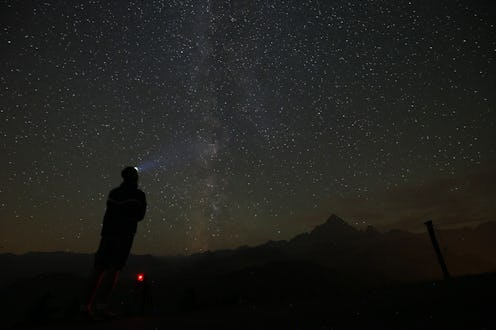A barrage of "shooting stars" welcomed the new year early Monday morning, and based on the photos, the 2016 Quadrantid meteor shower was spectacular. The first meteor shower of the year lit up the night sky early on Monday morning around 3 a.m., though meteors became visible starting on Jan. 1. According to Space.com, the cosmic event was visible in both North America and Europe, and conditions were particularly ideal in the eastern parts of the U.S. and Canada.
Though this year's turnout was memorable, the Quadrantid meteor shower isn't actually a unique event, per se. The shower actually occurs every year during the month of January, but it's unique for different reasons. Space.com's Elizabeth Howell explains why the origin of the showers is peculiar in comparison with other stellar events.
Firstly, the shower is named after the constellation Quadrans Muralis, dubbed in 1795 by French astronomer Jerome Lalande. The constellation, located near the handle of the big dipper, doesn't exist anymore as of 1922 when the Astronomical Union elected not to include it in its list of major constellations. Though the showers were spotted as early as 1825 within the constellation's area, according to Space.com's Joe Rao, the asteroid from which the meteors broke off was not identified until much more recently in 2003. Asteroids are bodies of rock that orbit the sun. Howell adds that at 1.2 miles in diameter, the asteroid could have crumbled off of the C/1490 Y1 comet which has remain unaccounted for during the past several centuries since 1490. Unlike asteroids, comets are frozen bodies that begin to heat up and release gases as they approach the sun, creating a tail of light and other bodies of rock. According to NASA, the Quadrantids were brighter and lasted for a longer period of time compared to most other meteor showers. At about 120 meteor sightings per hour, viewers were in for a treat.
If you missed the meteor shower on Monday morning, or weren't able to brave the cool conditions to view it, you can check out the pictures below or stay tuned for the next night sky event, which should be happening fairly soon. The newspaper Montreal Gazette reported Monday that the Comet Catalina will be passing through the handle of the Big Dipper on Jan. 15 and 16 of this year. Unlike the Quadrantids, though, you may have to use binoculars to spot the comet. Additionally, it won't consist of separate meteors. Instead, it will be just one body of light. Here are a few photos that give us all a taste of what the first meteor shower of the year looked like.
